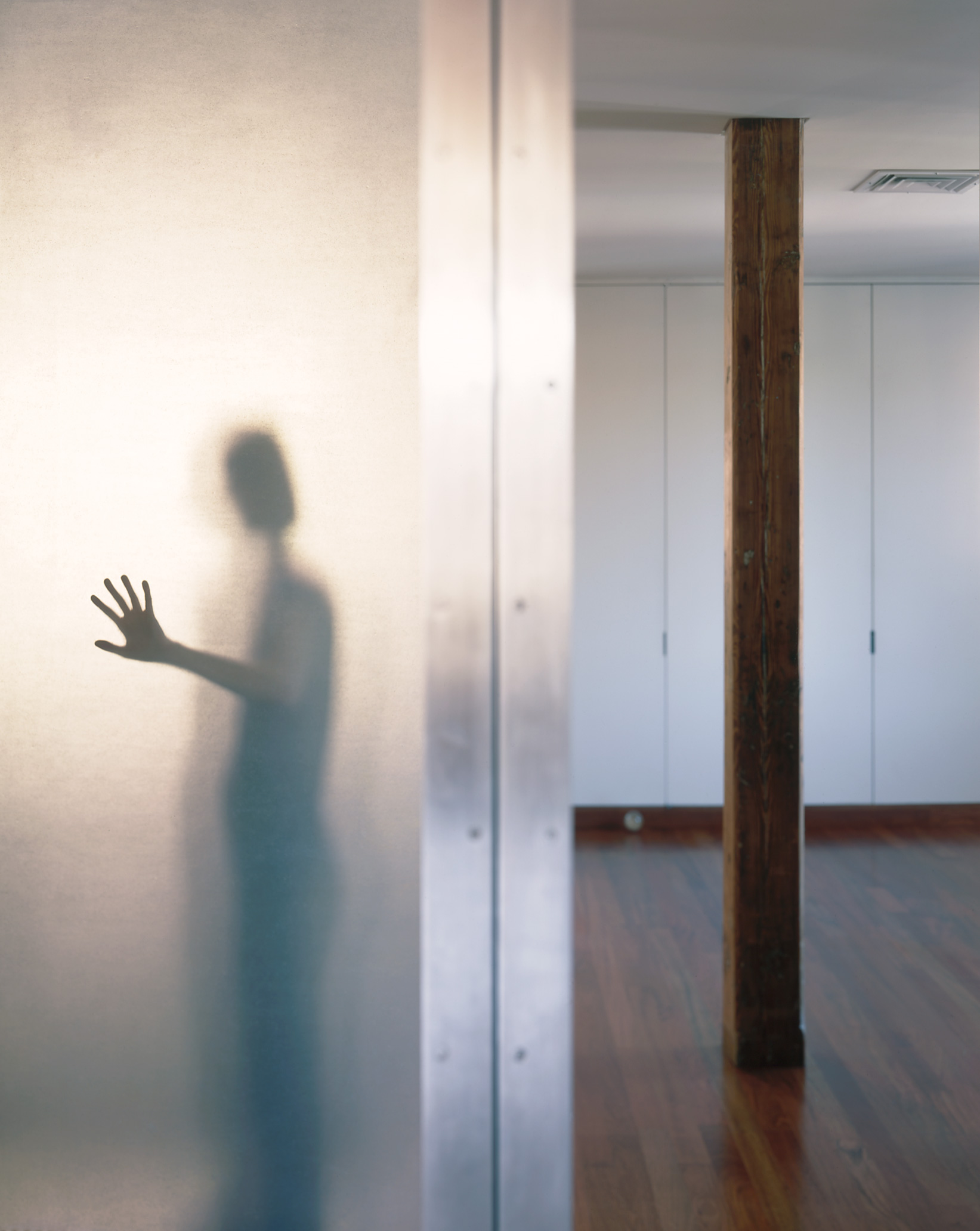
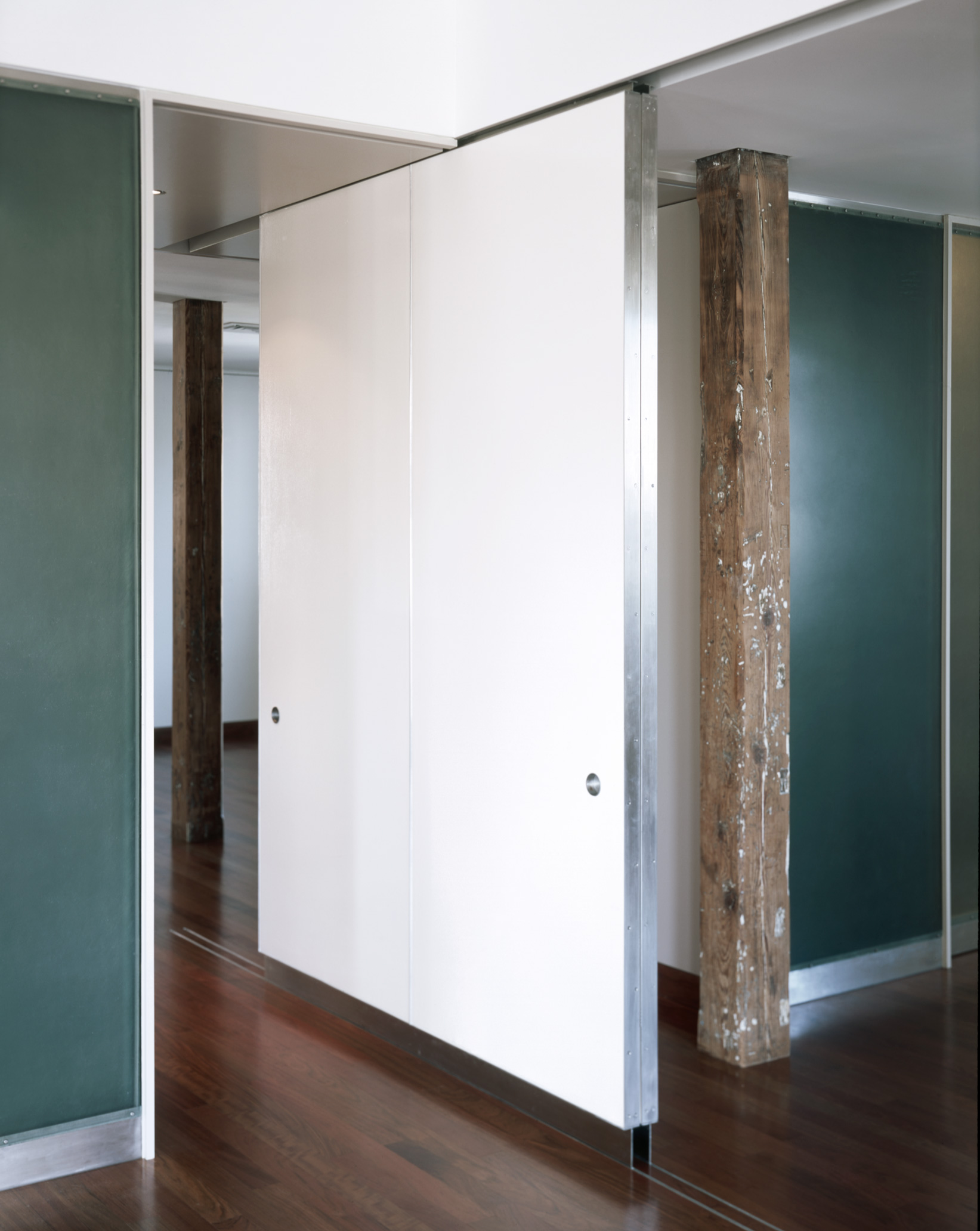
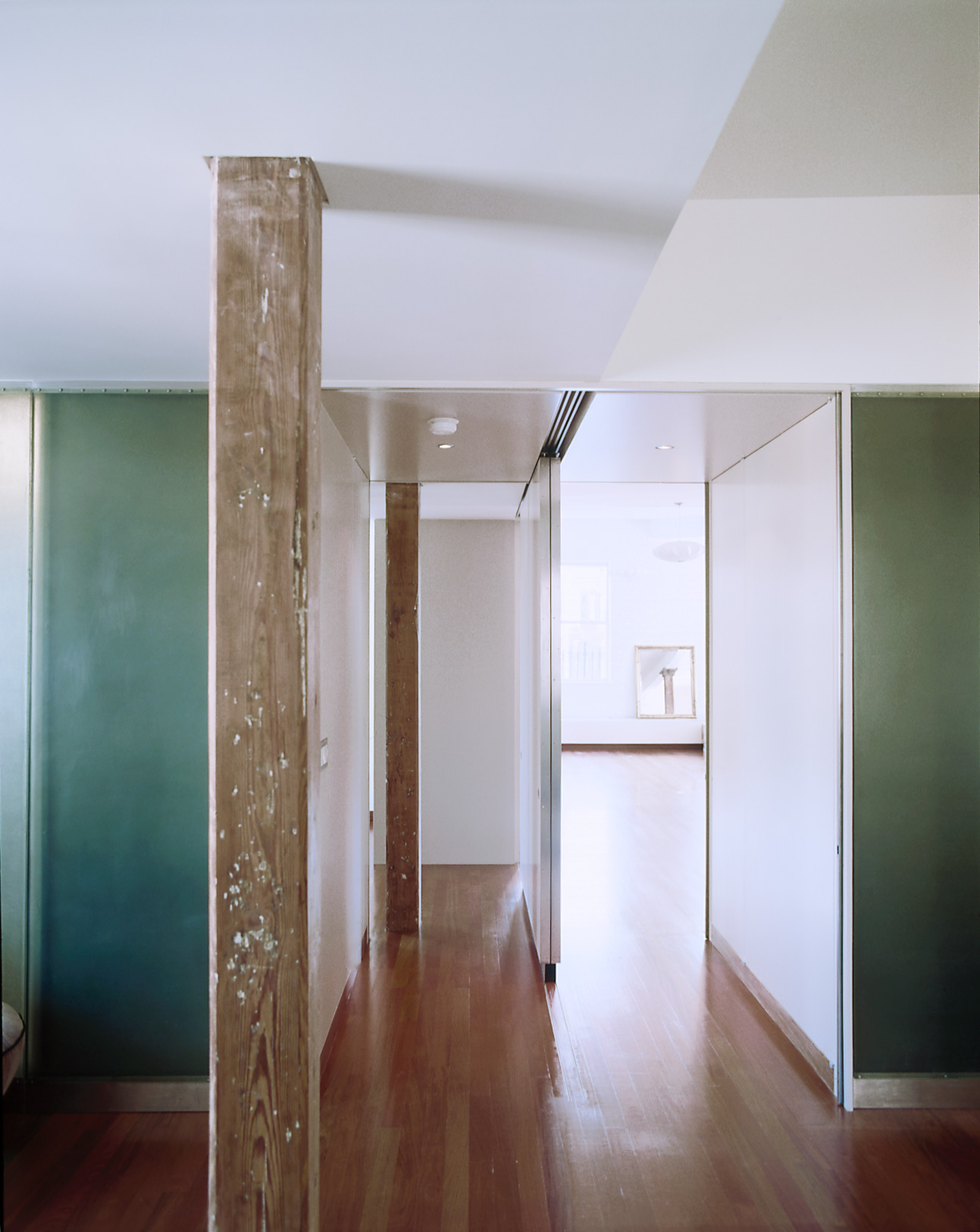
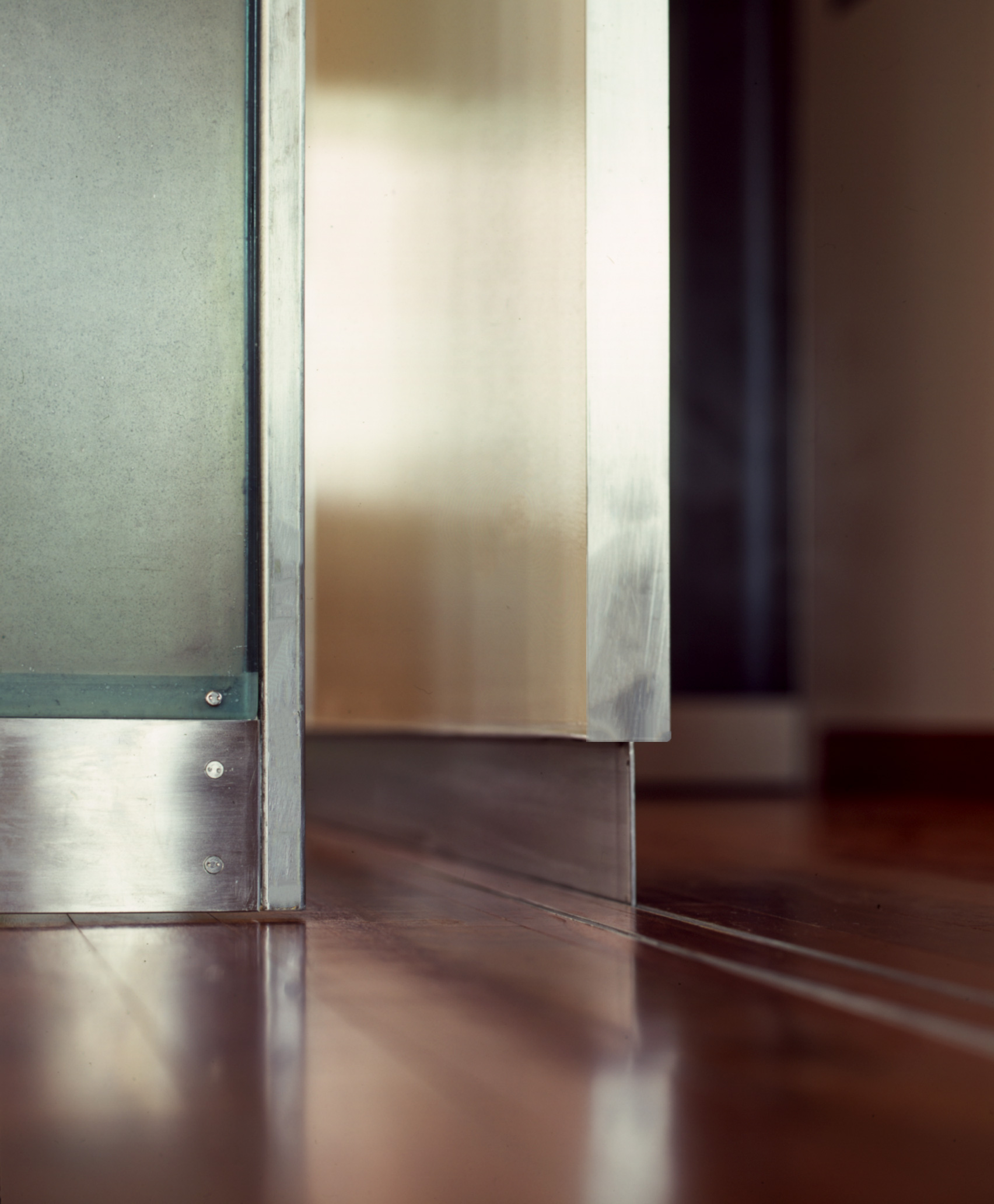


Translucent and opaque panels reveal and conceal different zones within the loft and allow for the varying levels of light in the space.
View of sliding doors.
Detail of sliding door guides.
Diagrammatic collage.



This residence spans the top floor and part of the roof of a six-story building in Manhattan's SoHo district. The loft renovation transforms an industrial space into a serene, ordered home. Exposures at three faces of the existing space are fully exploited to allow light in and to provide expansive vistas outward. These exposures, coupled with the owner’s desire to maintain an open, flexible layout, provide an opportunity to explore the color temperatures of natural light on the perception of the space and materials. As any given day unfolds, the hues across multiple rooms shift from yellow to white to rose to blue.
The program requires that the space be configured and reconfigured as either a one-, two-, or three-bedroom apartment within minutes. The existing floor plan, however, does not have an inherently organized structure to accommodate a systematized division of space. Existing windows, columns, and shafts are arrayed in such a way that results in an irregular floor plate that lies within the rectangular building envelope. This renovation scheme introduces an organizational matrix in service of housing utilitarian functions; its service core—including kitchen, bathroom, storage, and laundry facilities—extends east to west, dividing the plan into living (public) and sleeping (private) zones.
Design Team:
Structural Engineer:
MEP/FP Engineer:
General Contractor:
Photography:

In order to achieve a soft and illuminated division of space, translucent fiberglass panels have been designed to screen the service functions and to form a continuous plane. They also have the ability to slide open, admitting additional light and mediating between public and private areas. Of equal importance are a series of opaque sliding walls clustered within the service zone. These sliding walls can be pulled across the width of the apartment to further subdivide the space into either a one-, two- or three-bedroom unit. Together, the service zone and the sliding wall system give order to the asymmetrical floor plan.
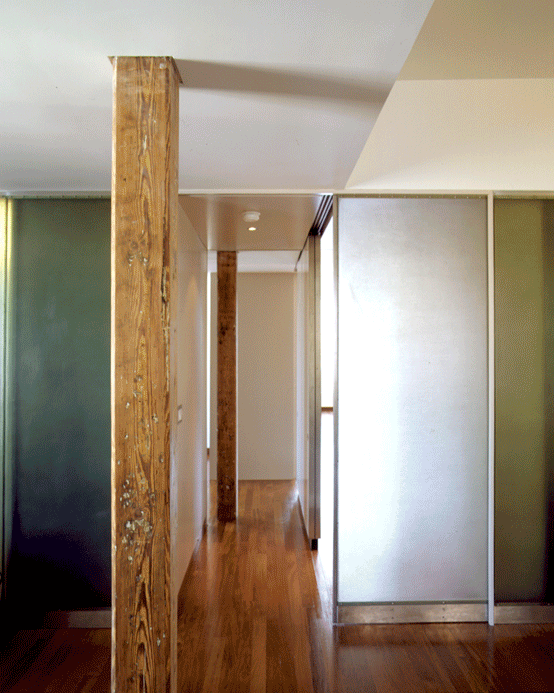
Natural light plays a strong role as it engages various materials to enhance certain perceptions of the space.
The tectonic strategy juxtaposes form and volume in the detailing of surfaces. Panels are suspended from the ceiling so that the floor is a continuous plane with only hints of subdivision. The contrast of translucency and opacity, as well as the position of the various sliding panels, impacts the perception of depth.

The prefabricated fiberglass panels and sliding door panels stack on top of one another in a series of laminated layers. The section details show the elegance of the system as all walls maintain a similar thickness.
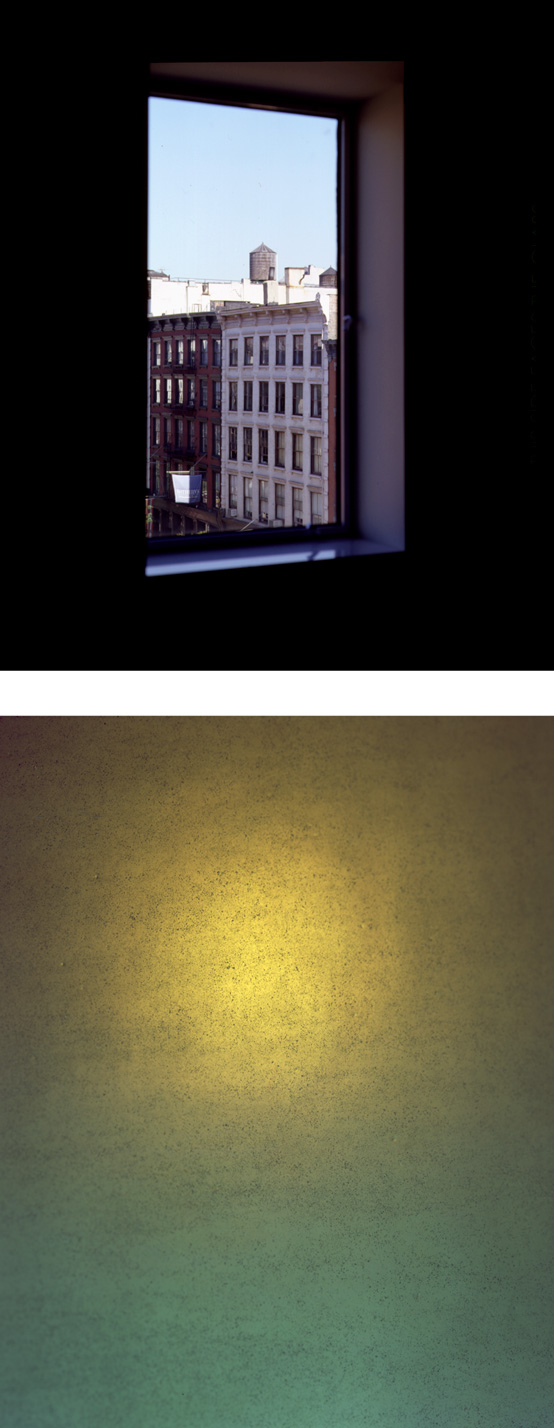
Additional windows supplement existing windows in order to maximize daylight and to open up and draw into the loft a 360-degree view of the city; the result is a beautiful panorama with light as a palpable presence. As day passes and seasons change, the shifting light literally colors the interior with different hues at different hours. The private sleeping quarters occupy the northern part of the space, basking in cool, blue northern light. The living room, because of its size and orientation, benefits from the warm, yellow tint of southern light while still capturing views of both the sunrise and sunset.
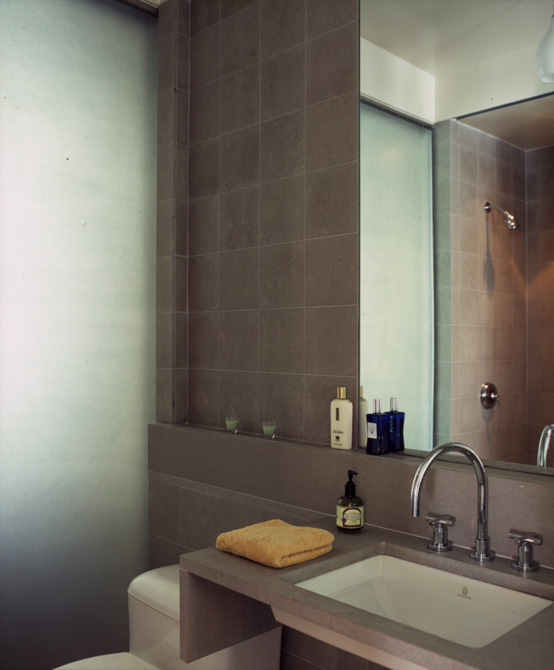






Translucent and opaque panels reveal and conceal different zones within the loft and allow for the varying levels of light in the space.
View of sliding doors.
Detail of sliding door guides.
Diagrammatic collage.












